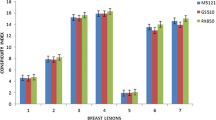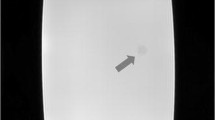Medical images produced by x-ray detectors, computed tomography (CT) scanners, and other modalities typically contain between 12–16 bits/pixel, which corresponds to 4,096–65,536 shades of gray. On the other hand, we see that these images are visualized by means of medical displays that have much lower available number of gray shades. For a long time medical LCDs only supported 8 bits or 256 shades of gray per pixel. With the introduction of medical displays optimized for mammography, the available number of gray scales increased to 1,024. Recently, several manufacturers announced new display systems with higher bit depth. Because higher bit depth often directly results in higher display cost, it is a logical question to ask if this is required or even useful at all. This paper will give an answer by investigating several aspects such as limitations of the human visual system, digital imaging and communication in medicine grayscale standard display function calibration, and characteristics of medical LCDs.










Similar content being viewed by others
References
Barco Coronis 5MP Mammo. Available at http://www.barco.com/barcoview/downloads/Coronis5MPMammo.pdf
Totoku Me351i. Available at http://www.totoku.com/display/products/medical/me351i/index.html
Eizo Radiforce G31. Available at http://www.radiforce.com/en/products/mono-g31.html
T Movshon L Kiorpes (1988) ArticleTitleAnalysis of the development of spatial sensitivity in monkey and human infants J Opt Soc Am A 5 IssueID12 2166–2172 Occurrence Handle3230486 Occurrence Handle1:STN:280:DyaL1M7lslWlsA%3D%3D Occurrence Handle10.1364/JOSAA.5.002166
S Daly (1993) The visible differences predictor: An algorithm for the assessment of image fidelity, Chap. 13 AB Wastson (Eds) Digital Images and Human Vision MIT Press Cambridge, MA
PGJ Barten (1992) ArticleTitlePhysical model for contrast sensitivity of the human eye Proc SPIE Int Soc Opt Eng 1666 57–72
PGJ Barten (1999) Contrast Sensitivity of the Human Eye and Its Effects on Image Quality SPIE Press Bellingham, WA
Assessment of Display Performance for Medical Imaging Systems, American Association of Physicists in Medicine (AAPM), Task Group 18. Available at http://deckard.mc.duke.edu/~samei/tg18_files/tg18.pdf
NEMA: Digital Imaging and Communications in Medicine (DICOM), Supplement 28: Grayscale Standard Display Function
E Samei (2004) Digital mammography displays A Karellas A Giger (Eds) Advances in Breast Imaging: Physics, Technology, and Clinical Applications. RSNA Categorical Course Syllabus Radiological Society of North America (RSNA) Oak Brook, IL 135–143
E Samei (2005) ArticleTitleTechnological and psychophysical considerations for digital mammographic displays, AAPM/RSNA physics tutorial for residents Radiographics 25 491–501 Occurrence Handle15798066 Occurrence Handle10.1148/rg.252045185
MJ Flynn J Kanicki A Badano WR Eyler (1999) ArticleTitleHigh-fidelity electronic displays of digital radiographs Radiographics 19 1653–1669 Occurrence Handle10555680 Occurrence Handle1:STN:280:DC%2BD3c%2Fit1KjtA%3D%3D
Badano A: Viewing Angle Comparison of IPS and VA Medical AMLCDs, SID 2005
E Samei SL Wright (2004) ArticleTitleEffect of viewing angle response on DICOM compliance of liquid crystal displays Proc SPIE Med Imaging 5371 170–177
E Samei SL Wright (2006) ArticleTitleViewing angle performance of medical liquid crystal displays Med Phys 33 IssueID3 645–654 Occurrence Handle16878568 Occurrence Handle10.1118/1.2168430
A Badano MJ Flynn S Martin J Kanicki (2003) ArticleTitleAngular dependence of the luminance and contrast in medical monochrome liquid crystal displays Med Phys 30 IssueID10 2602–2613 Occurrence Handle14596296 Occurrence Handle10.1118/1.1606449
T Kimpe A Xthona P Matthijs L De Paepe (2005) ArticleTitleSolution for nonuniformities and spatial noise in medical LCD displays by using pixel-based correction J Digit Imaging 18 IssueID3 209–218 Occurrence Handle15827820 Occurrence Handle10.1007/s10278-005-2939-0
E Muka T Mertelmeier RM Slone E Senol (1997) ArticleTitleImpact of phosphor luminance noise on the specification of high-resolution CRT displays for medical imaging Proc SPIE Int Soc Opt Eng 2431 210–221
K Bacher et al. (2006) ArticleTitleImage quality performance of liquid crystal display systems: influence of display resolution, magnification and window settings on contrast-detail detection Eur J Radiol 58 IssueID3 471–479 Occurrence Handle16442770 Occurrence Handle10.1016/j.ejrad.2005.12.016
A Badano DH Fifadara (2004) ArticleTitleGoniometric and conoscopic measurements of angular display contrast for one-, three-, five-, and nine-million-pixel medical liquid crystal displays Med Phys 31 IssueID12 3452–3460 Occurrence Handle15651628 Occurrence Handle10.1118/1.1824198
DH Fifadara A Averbukh DS Channin A Badano (2004) ArticleTitleEffect of viewing angle on luminance and contrast for a five-million-pixel monochrome display and a nine-million-pixel color liquid crystal display J Digit Imaging 17 IssueID4 264–270 Occurrence Handle15692870 Occurrence Handle10.1007/s10278-004-1021-7
Author information
Authors and Affiliations
Corresponding author
Rights and permissions
About this article
Cite this article
Kimpe, T., Tuytschaever, T. Increasing the Number of Gray Shades in Medical Display Systems—How Much is Enough?. J Digit Imaging 20, 422–432 (2007). https://doi.org/10.1007/s10278-006-1052-3
Published:
Issue Date:
DOI: https://doi.org/10.1007/s10278-006-1052-3




